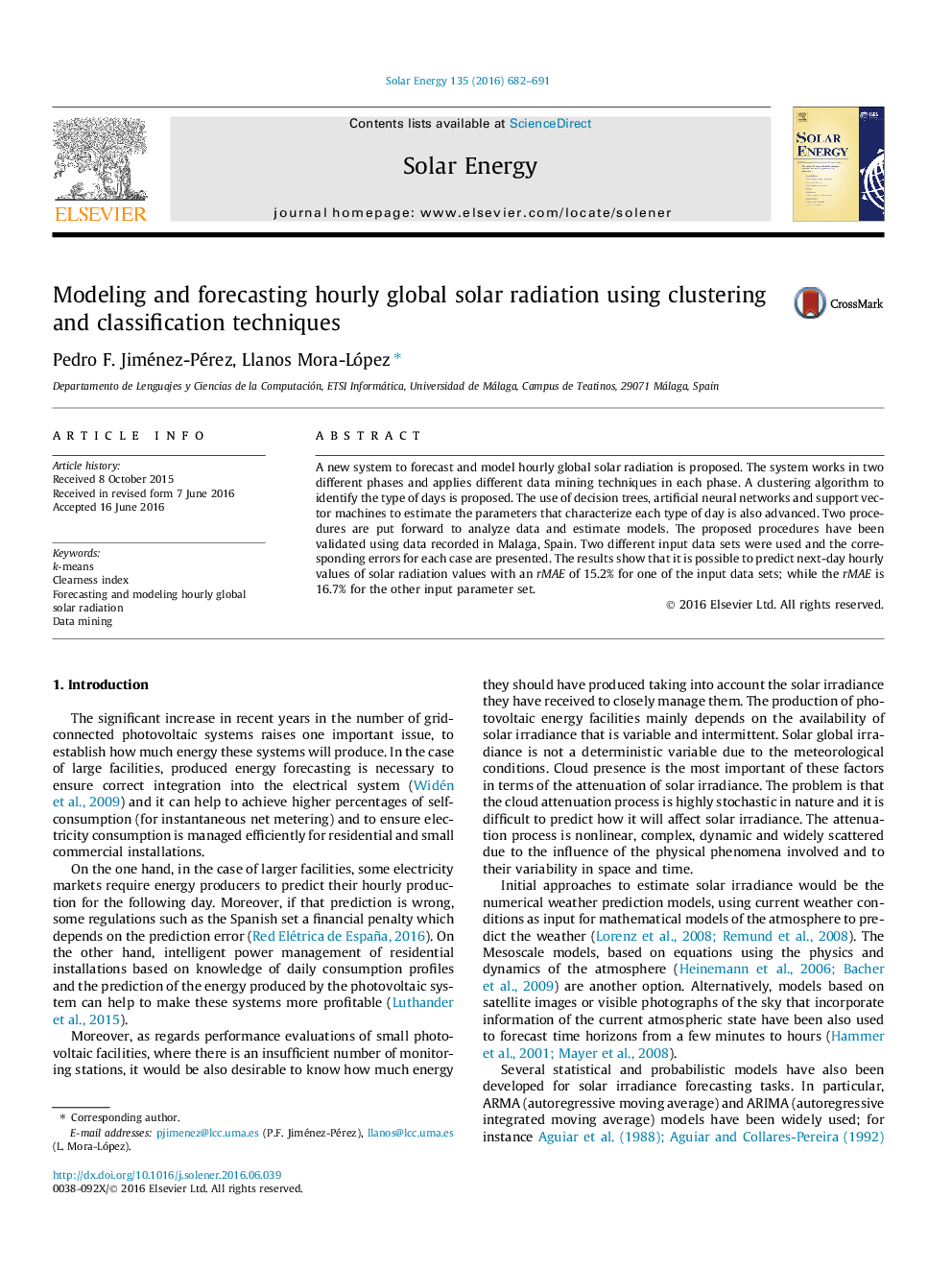| Article ID | Journal | Published Year | Pages | File Type |
|---|---|---|---|---|
| 7936865 | Solar Energy | 2016 | 10 Pages |
Abstract
A new system to forecast and model hourly global solar radiation is proposed. The system works in two different phases and applies different data mining techniques in each phase. A clustering algorithm to identify the type of days is proposed. The use of decision trees, artificial neural networks and support vector machines to estimate the parameters that characterize each type of day is also advanced. Two procedures are put forward to analyze data and estimate models. The proposed procedures have been validated using data recorded in Malaga, Spain. Two different input data sets were used and the corresponding errors for each case are presented. The results show that it is possible to predict next-day hourly values of solar radiation values with an rMAE of 15.2% for one of the input data sets; while the rMAE is 16.7% for the other input parameter set.
Keywords
Related Topics
Physical Sciences and Engineering
Energy
Renewable Energy, Sustainability and the Environment
Authors
Pedro F. Jiménez-Pérez, Llanos Mora-López,
